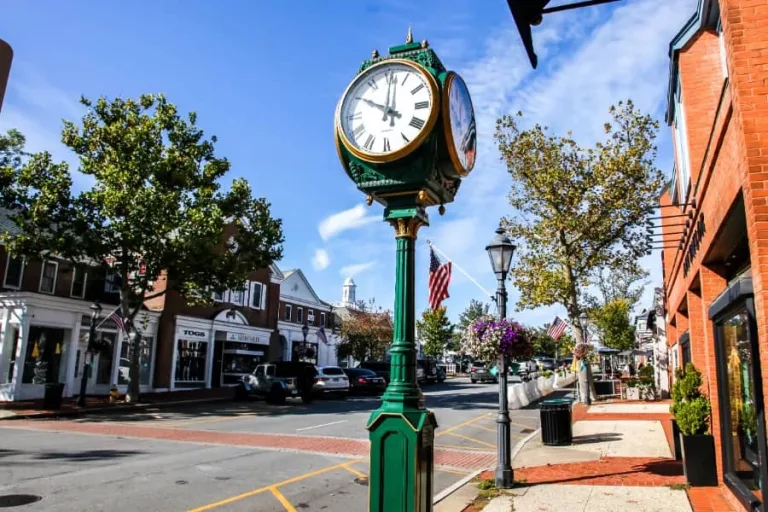REVIEW
By Emma Barhydt
Andrew Warburton’s debut book, New England Fairies: A History of the Little People of the Hills and Forests, opens a new chapter in folklore studies, exploring tales of fairies and little people that have fascinated New Englanders for centuries. In a recent interview, Warburton delved into his passion for folklore, the inspiration behind his work, and his meticulous research process, offering readers insight into the world of New England’s fairy folk.
For Warburton, the journey to writing New England Fairies began long before he put pen to paper. His fascination with the fairy legends of Britain, Ireland, and Wales laid the foundation for what would become a deep interest in North American folklore. As he recalled, the moment of realization came over a decade ago when he heard a story about the Mohegan Tribe in Connecticut, who opposed a housing development because it would disturb the “little people” believed to live under Mohegan Hill.
“That was the first time I ever really even considered fairies in North America,” Warburton said. “But that planted the seed, and then I guess it took 12 years to start writing it.”
The blend of ancient indigenous stories and European legends intrigued Warburton, who spent a year intensively researching and traveling to the sites featured in his book. His research took him on a 40-hour drive across New England, a journey that brought to life both the beauty and the mystery of the region’s landscapes.
Among his many stops, Warburton found the White Mountains in New Hampshire particularly magical. “There are quite a lot of stories from those White Mountains. There’s Abenaki stories from there about the water fairies,” Warburton explained. One such story revolves around Diana’s Baths, a location Warburton described as “exactly where you would expect fairies to live.” He was enchanted by the waterfalls, pools, and the overall beauty of the place, making it one of his favorite spots during his travels.
But Warburton’s interest extended beyond the landscape. His favorite story in the book is that of Perry Boney, a lesser-known figure from our own Sherman, Connecticut, rumored to have spoken with fairies. “No one really knows where the rumors came from,” Warburton shared, adding that the earliest written reference to Perry Boney dates back to 1938. “I think I was the first kind of writer or journalist or whatever to uncover the facts about him,” Warburton said proudly.
For Warburton, folklore is more than just paranormal stories—it’s a window into history, culture, and immigration patterns. “You can learn a lot about the immigrants who came to America, to New England especially, through the stories that they told,” he said. His goal with the book was not only to entertain but also to educate. By recording these legends, Warburton hopes to preserve a sense of magic while deepening readers’ understanding of the region’s diverse cultural heritage.
One aspect of his research Warburton was particularly careful about was including indigenous stories. He acknowledged that while the term “fairies” might be more European, there are numerous indigenous legends of little people that needed to be part of the narrative. “They were the original inhabitants of the lands that we now call New England, so it just felt like it would be some sort of erasure if I didn’t include their stories about little people,” he explained.
Warburton’s approach to folklore is thoughtful and rooted in history. He avoided including modern paranormal stories, choosing instead to focus on legends that have been passed down through generations. “I guess I didn’t want to include stories that had no historical value,” he noted. His aim was to showcase tales that, while magical, still offer a glimpse into the past.
One of the challenges Warburton faced was uncovering stories that had faded from local memory. While researching the “Little People’s Village” in Middlebury, Connecticut, for example, he found that not everyone knew of the legend. However, during a lunch stop in nearby Waterbury, he was surprised to find a waitress who had heard of it, even mentioning the local legend that sitting on the village’s throne would result in death within seven years.
Despite the obscurity of some tales, Warburton made efforts to track down these lesser-known legends. He delved into old books and databases, but it was often the people he met along the way who provided the most valuable insights. From the Wampanoag Museum in Aquinnah to conversations with locals like Anne Price in Sherman, these interactions helped him piece together the forgotten lore.
Warburton’s dedication to authenticity even led him to investigate the real people behind the legends. In Campton, New Hampshire, he researched the family connected to the story of fairy footprints, uncovering their names, occupations, and lineage. “It just filled in the picture a little bit,” Warburton explained, emphasizing the importance of understanding who was telling these stories and why.
Though Warburton himself has never encountered a fairy, he remains intrigued by the universality of belief in little people across cultures. “I’m more interested in why do people believe?” he reflected. “There seems to be stories about lesser spirits that take a kind of humanoid form and little people.” This fascination with belief systems has driven much of his work, and Warburton remains open to the possibility of fairies existing.
Interestingly, many of the readers Warburton has met at book signings and talks are firm believers in fairies, particularly older women who have passed down stories from their Irish or other European ancestors. This strong belief has even surprised Warburton, who noted how ingrained the legends still are in some families.
Warburton’s exploration of New England fairies is just the beginning of his work on North American folklore. He revealed that his next project, New York Fairies, is already in the works, with hopes of publication in 2025. The success of his first book has opened new doors for him, expanding his scope to cover the entire Northeast.
In New England Fairies, Warburton has succeeded in blending historical research with enchanting folklore, offering readers a chance to see the world around them through a magical lens. For those willing to look, the hills and forests of New England may still hold the secrets of the fairy folk.





